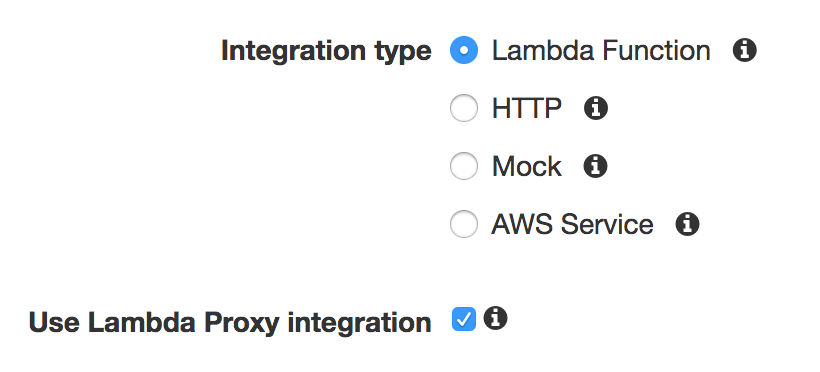tink_web
 tink_web copied to clipboard
tink_web copied to clipboard
Export routing information
I've been experimenting with the tink_*, web libraries and aws lambda and have a rough tink_http container implementation that works targeting the node runtime.
To have aws lambda working via http, you have to use aws api gateway which uses, imo, an odd request/response integration "frontend" to your aws lambda function.
This requires you to specify a path segment, which http method it accepts, the expected mime type and more.
As tink_web has the ability to access the majority of the http info already from your routes, would there be interest in having tink_web export the info to json or some other format, like openapi?
Oh, the container part is exciting news :)
I do indeed have plans for this kind of stuff. For me reverse routing is the most important bit (so you don't have to assemble URLs by hand), but exporting a full routing table should also be possible. I'll see what I can do ;)
@skial Say, I wonder is there no way to bypass this restriction? How do other frameworks cope with that? Where might I find documentation for this?
@skial Say, I wonder is there no way to bypass this restriction?
As far as I've been able to figure out, no.
How do other frameworks cope with that?
I haven't actually looked to see if any other frameworks actually support deploying to aws lambda, I just started hacking. :grin: I'll take a quick look.
I'm thinking of using https://www.terraform.io/ so I don't have to do too much bootstrapping by myself.
Where might I find documentation for this?
I'll post some links etc in another comment as I've got a load of tabs open, as two aws services, imo, are poorly linked together.
More articles than documentation.
I actually forget to say that aws IAM also, ideally, needs to be automated. IAM is used to allow gateway & lambda to talk to each other and to aws cloudwatch, which is used for monitoring. But this is going beyond the scope of the original issue.
- aws lambda
- aws api gateway
- articles
- Build a serverless anagram solver on aws
- Accessing HTTP headers in Lambda & Gateway
- How to report errors from Lambda => I need to look at how to deal with errors again since the recent
tink_httpupdate, inspect the response object I guess. - How to return html from Lambda
- Build a serverless URL shortner
- Creating a request object for your lambda function from gateway
- forks
tink_httpawsNodeContainer.hx
I've also included the request mapping I'm currently using.
Gateway Request Integration mapping
{
"ip" : "$context.identity.sourceIp",
"resourcePath" : "$context.resourcePath",
"body" : $input.body,
"headers": {
#foreach($header in $input.params().header.keySet())
"$header": "$util.escapeJavaScript($input.params().header.get($header))" #if($foreach.hasNext),#end
#end
},
"method": "$context.httpMethod",
"params": {
#foreach($param in $input.params().path.keySet())
"$param": "$util.escapeJavaScript($input.params().path.get($param))" #if($foreach.hasNext),#end
#end
},
"query": {
#foreach($queryParam in $input.params().querystring.keySet())
"$queryParam": "$util.escapeJavaScript($input.params().querystring.get($queryParam))" #if($foreach.hasNext),#end
#end
}
}
Looks like the serverless framework would solve alot, at first look.
Phew, that's quite some reading to do :)
Maybe AWS has changed the API or something. Now it doesn't need a manual mapping template. Simply "use lambda proxy integration"

Quick links:
A few known limitations:
- duplicated query params not supported (because it is represented as key-value object)
- duplicated headers not supported (because it is represented as key-value object)
- streaming not supported (because the whole request/response is encoded into a json)
- need to distinguish the response type between plain-text or binary. Because if it is binary it has to be base64 encoded
Thats great @kevinresol :smile: